Collecting the Periphery - Part 4
Collecting the Periphery – Part 4
In February 2012 I started on a series of blogs dealing with the collecting of items that didn’t really fall within the usual collecting parameters of military yet where on the fringe, or periphery, of that field. Originally I thought to begin with The London County Council (LCC) School Attendance Medals. I will admit that this was the only topic that came to mind that fit the category for which I was aiming and therefore was intended to be somewhat of a “one off” entry. After looking through the collection, in drawers long forgotten, I found several examples that fit into the area of collecting the periphery. So I decided to begin with some of those confident that I would soon exhaust the subject and armed with the LCC School Attendance Medals as my back up I waded in.
Some of the topics touched on in past blogs were, Japanese Red Cross Medals, Women’s Voluntary Service Medals, Life Saving Medals and Germany’s Mother’s Crosses, to name a few. It seemed that the more I dug around in the collection the more topics I found, always shoving the School Attendance Medals to the back of the class, so-to-speak; which coincidently is where I found myself for most of my formal education. So almost two and a half years later I am finally getting around to my original subject;
“The London County Council School Attendance Medals”.
A standardized education system was introduced to Britain in 1870 in the form of an official Education Act. With this came the requirements for the creation of School Boards. Prior to this time the education of British children was pretty much a hit and miss proposition with attendance being non-compulsory. With the use of child labour and the need for families to bring as much funding into the home as possible the value of an education, any formal education, was seen as an unnecessary luxury. The government of the day saw a good basic education for all children would produce citizens who could read, write, and understand the history, geography and, to a point, politics of the country. Then, as today, it was recognized that an educated population was more beneficial to the country than merely an uneducated population mainly suited to manual labour. Though this was to prove to be somewhat a double edged sword as better educated workers began to form trade unions and demands for better work conditions and higher wages were put forward, sometimes violently so. I will be posting a short article on the General Strike of 1926 in the main section of the forum under the British Police section at a later date.
Some of the regulations set out by the Education Act of 1870 besides the standardization of the education system were, mandatory attendance with non-attendance being punishable by law and a grant system for the running of the schools based on daily attendance.
I believe that here in Ontario Canada the grants were still based on daily attendance at least until the 1950s and possibly the 1960s, when this was replaced by an “enrolment system” whereby as long as you could drag your little monster to school and enroll him or her the government would fund the school. Attendance was still mandatory though there was the option of “Home Schooling”.
Returning to the 1870’s; it was decided that there needed to be a reward system aimed at the children to encourage daily attendance. Many school boards implemented a reward system where the child would earn picture cards for perfect attendance as well as medals for regular attendance for a whole school year.
The London County Council school board did not implement their award system as early as many other school boards and commenced their program in 1886. In order to qualify for the medal the child needed 100% attendance with even an unavoidable absence due to illness being sufficient enough for the child to be disqualified. The system was so strict that even the headmaster’s word that the child had perfect attendance was not acceptable; it required a certificate signed by the school managers. I would suspect that the school managers depended greatly on the honesty of the headmaster to supply accurate data, rather than the managers actually verifying, on a daily basis, that the child was actually in attendance. Even with these stringent regulations there were a great number of medals awarded every year.
The first of the LCC medals featured the bust of Queen Victoria and were struck in white metal which was suspended from a bronze plaque displaying the date. The pupil’s name was engraved on the back. In 1890 it was decided to offer medals stuck in different metals to signify those whose attendance went unbroken for longer periods of time. For years 1 to 3 it was white metal, 4 and 5 was in bonze and 6 through 9 years of perfect attendance the medal was gilt. Later on a 10th and even 11th year medal was offered in silver but according to some reports the only sliver 11th year medal struck was a specimen from Spink in competition for the contract; no pupils were ever awarded the 11th year medal. 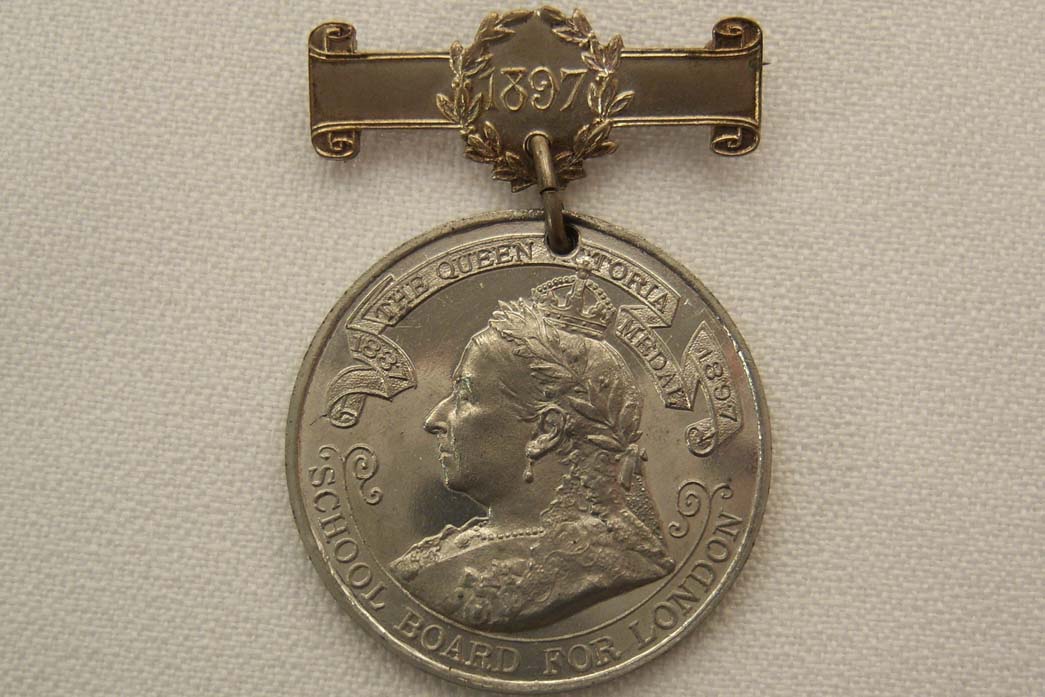
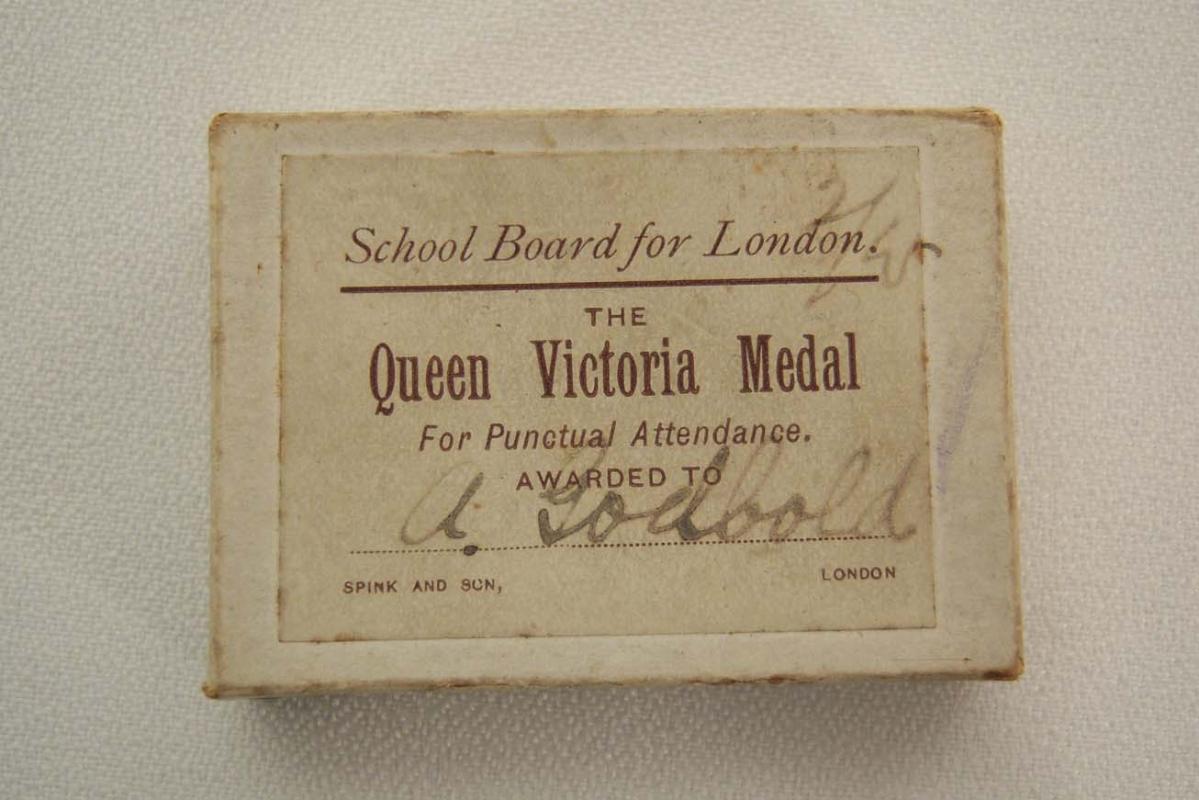
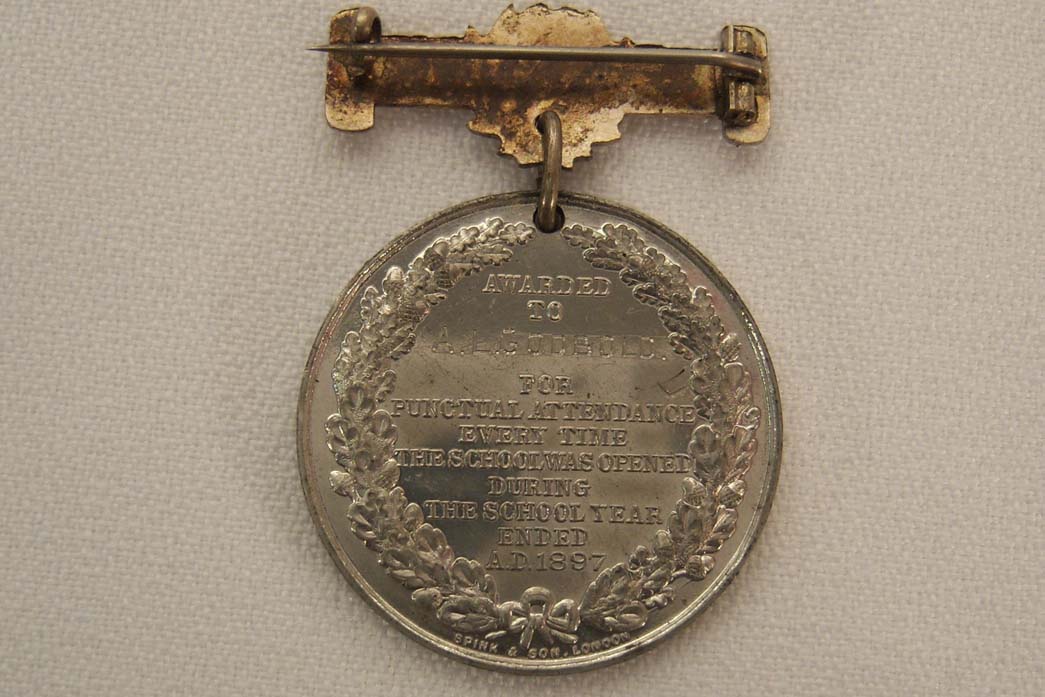
Following the death of Queen Victoria in 1901 a new medal was struck featuring the bust of King Edward VII. There were some changes to the reverse of this medal but basically the design remained the same as the previous design. The obverse changed in 1910 as far as the wording and this can be seen in the photos below.
As time went on the regulations, as they applied to medal qualifications, were lightened somewhat and up to two days absence due to illness was allowed, with a note from the parents verifying the reason for the absence. Later, it was decided that the school board needed to recognize that children who were ill were best kept home in order to lessen the chances of a class-wide infection. Therefore, children who were ill for an extended period of time were not disqualified from receiving the medal.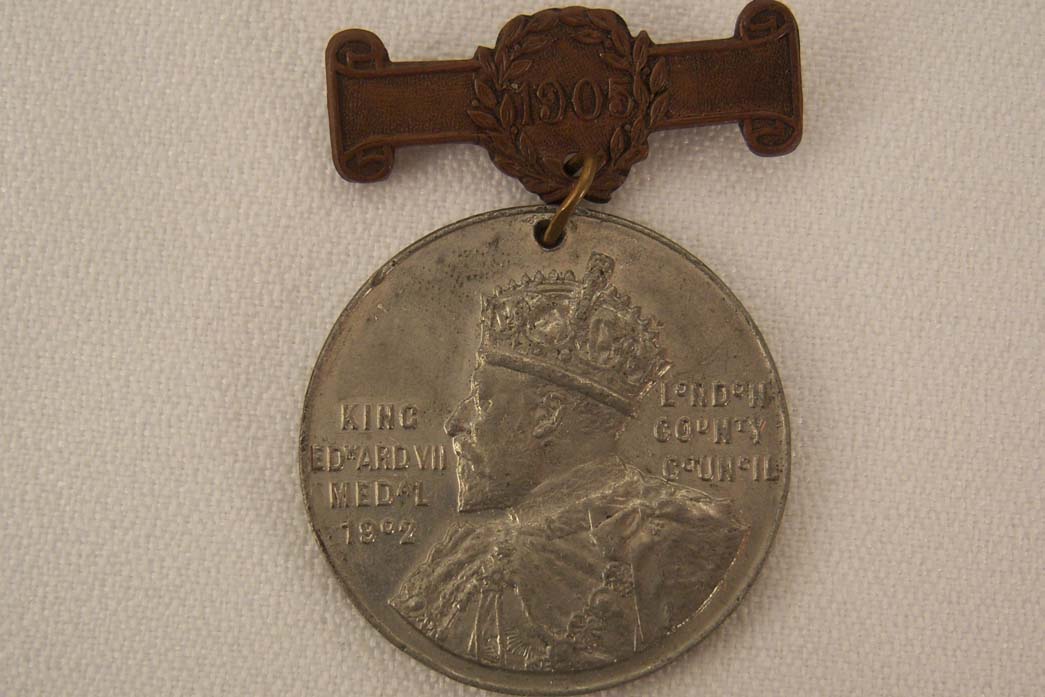
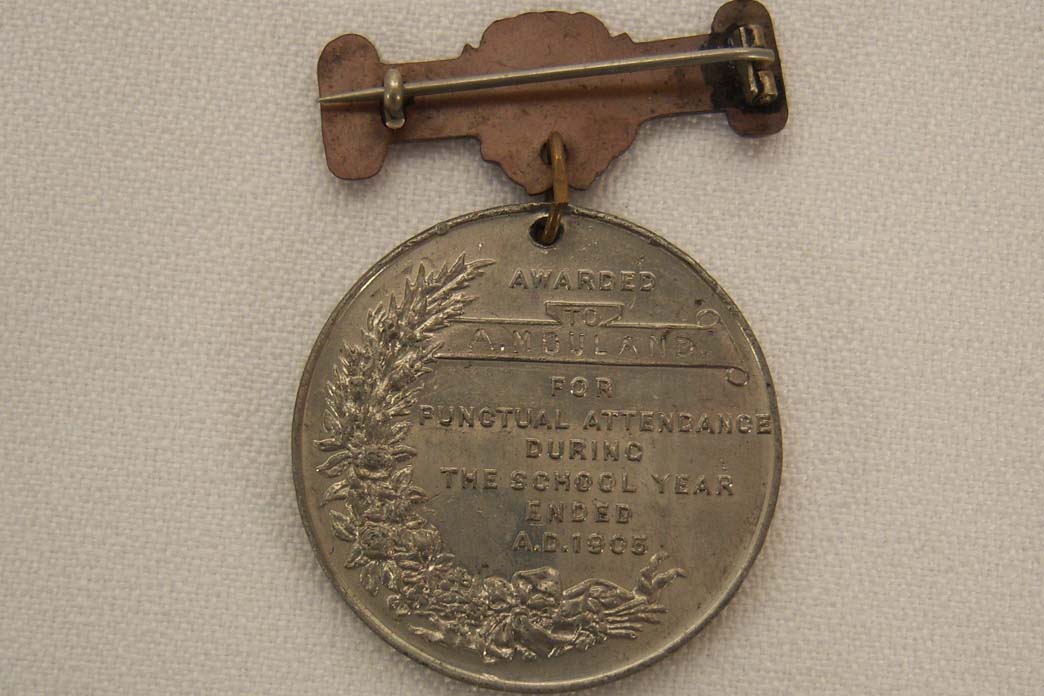
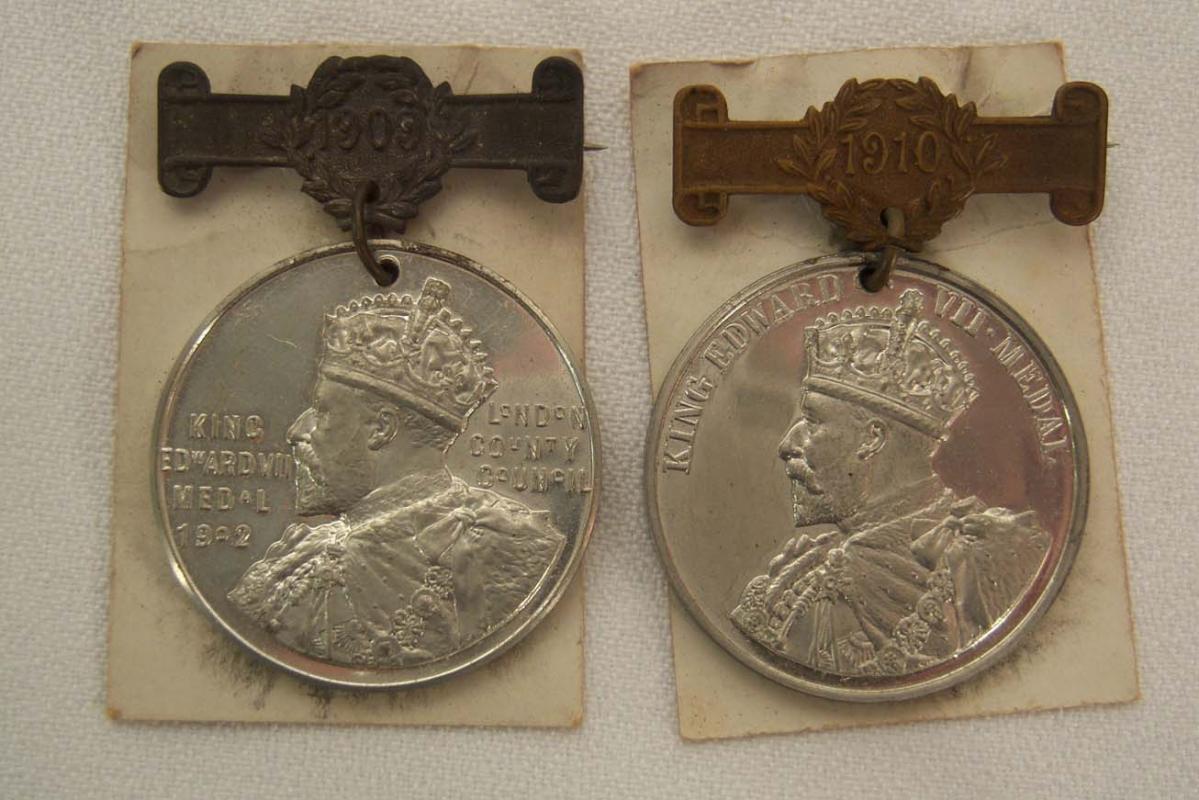
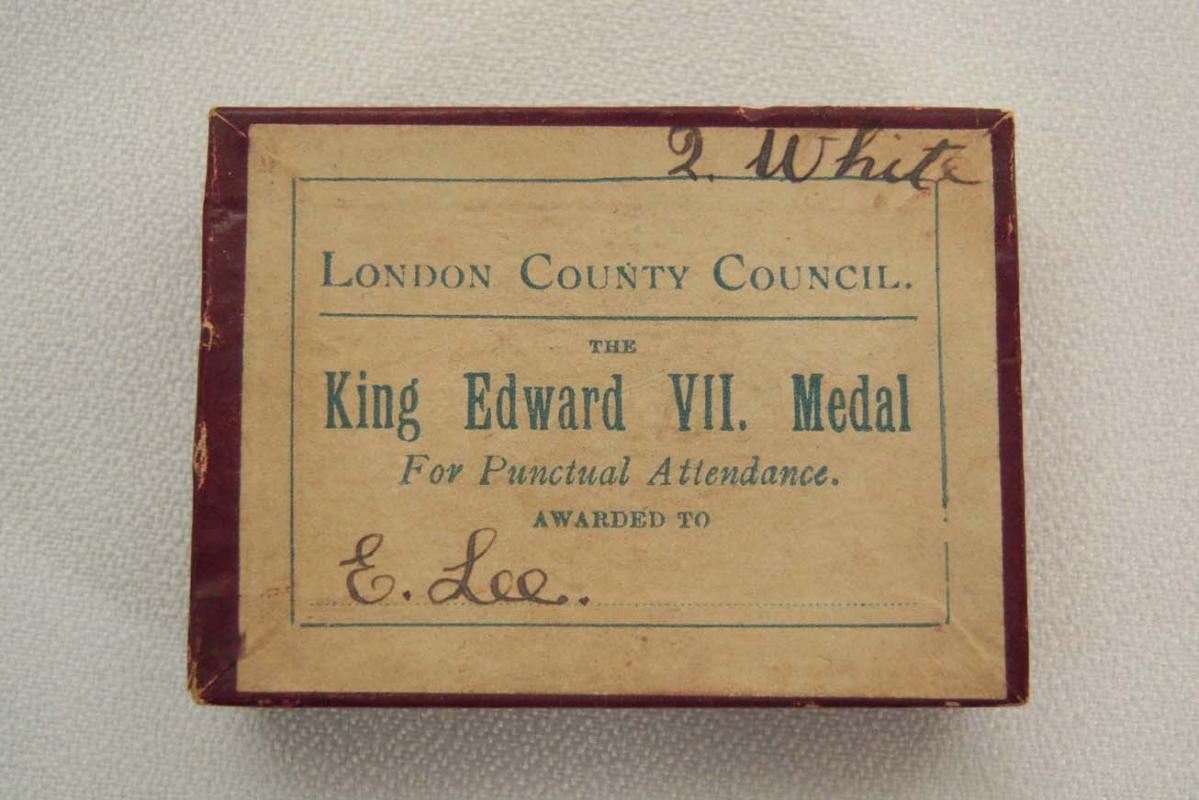
1911 brought with it a new monarch, King George V, following the passing of his father King Edward VII. The first pattern of medal was similar to those from past monarchs. Up to this time the medals had been 1½ inches but a new design was proposed and past that completely changed the look of the medal.
The new medal was struck in bronze, suspended from a red, white and black ribbon in the military style, with the suspension bar reading LCC and the qualifying year shown on a clasp on the ribbon. For each additional qualifying year there would be a clasp added to the medal. From what I have found these “additional” clasps did not have the date specified and used a laurel branch design. The recipient’s name was shown on the medals edge rather than on the reverse and the size was reduced to 1¼ inches. There was a large medal also offered in 1912 for those who qualified under the old system, however these are very scarce with only 200 ever being awarded. The new smaller medals were issued throughout the “war years” and the last year this was offered was 1920.
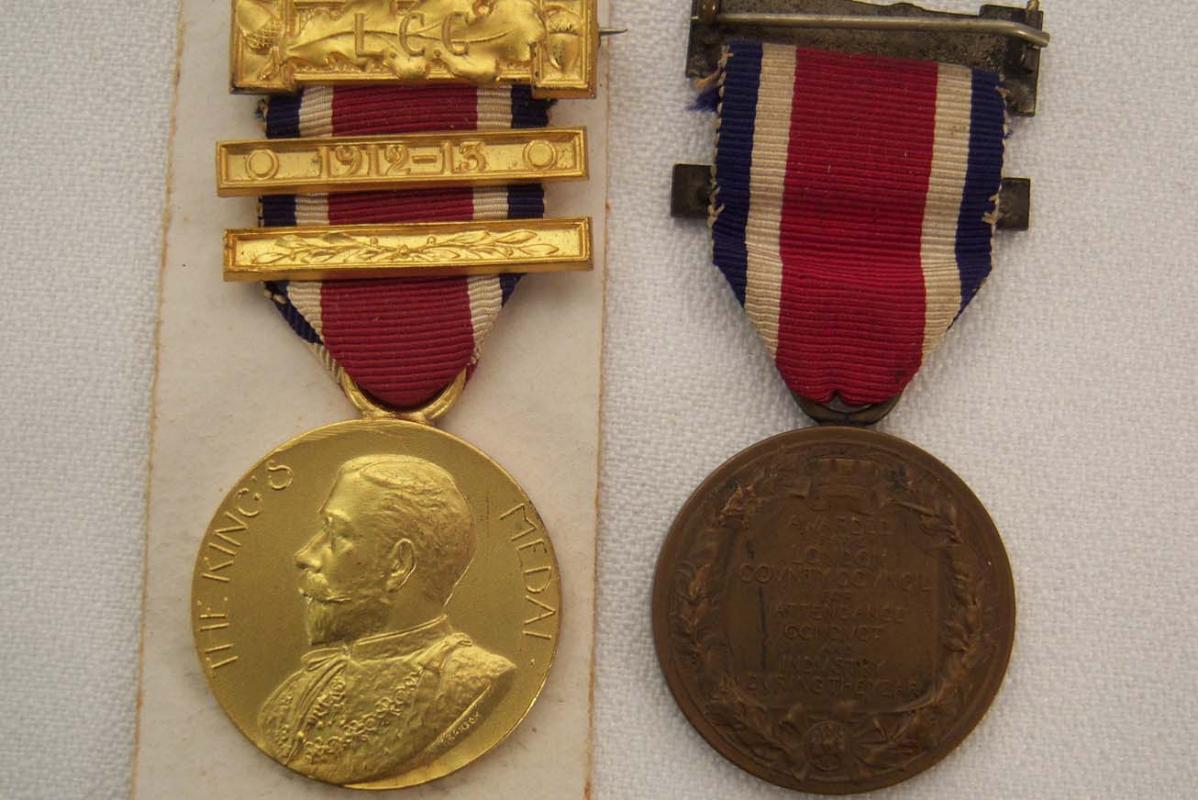
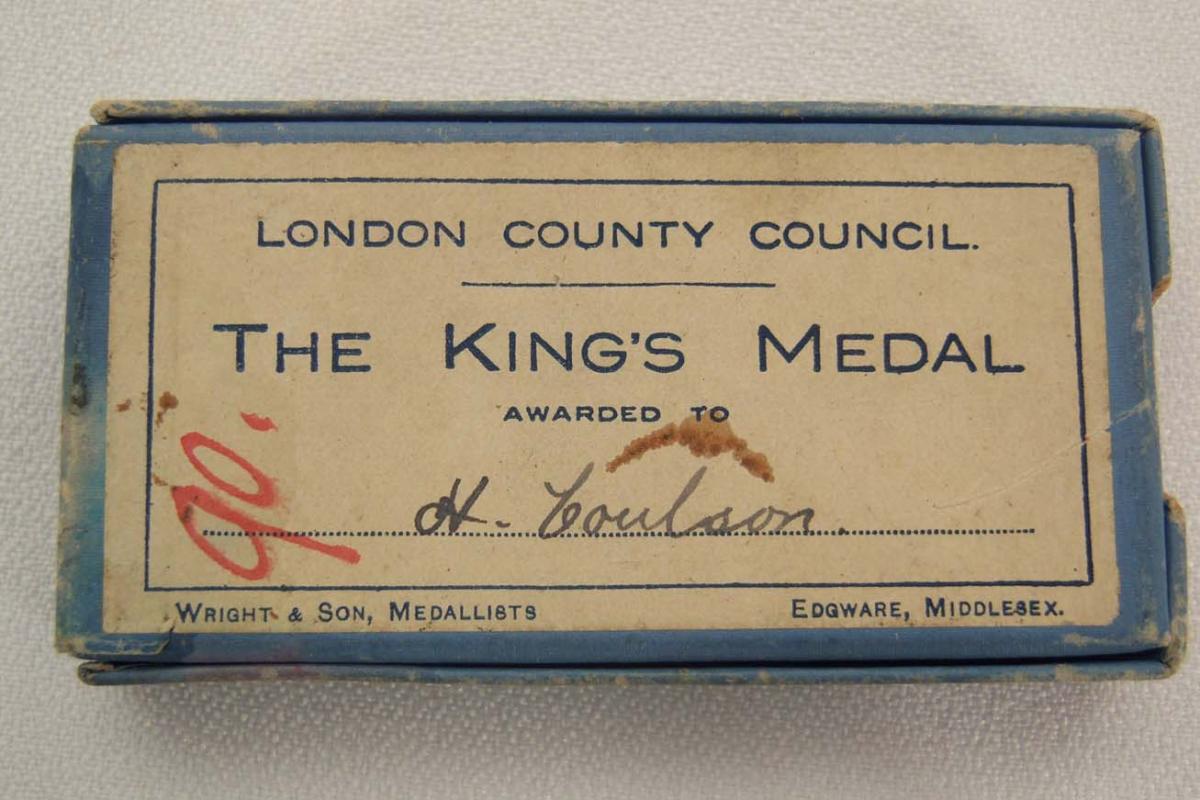
In the end the LCC had the longest “run” of any of the other participating school boards having used the medals system for thirty years. One of the exciting parts of collecting these medals is that at times you can also pick up the original boxes and better yet sometimes you can get a series that was awarded to one student (see photo below).
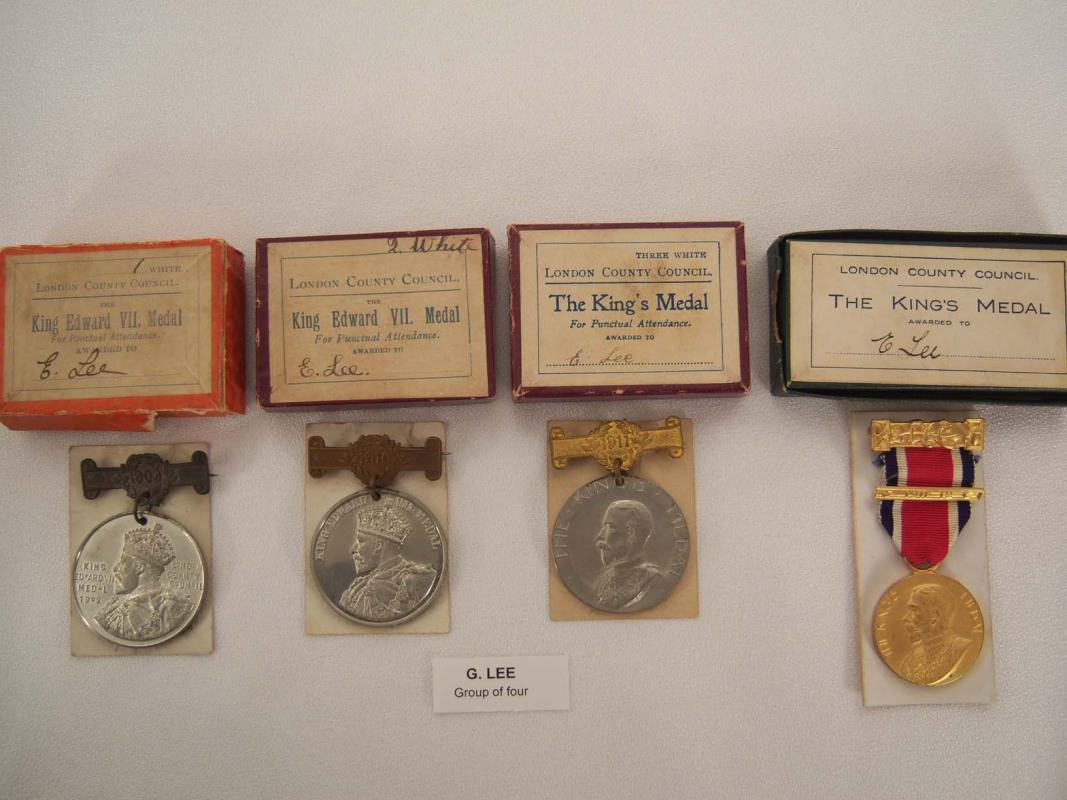
In the above set you can see the change of design between 1909 and 1910 (Edward VII) and the George V large version of the 1911 as well as small version of the 1911/1912 medals. Anyone who knows me knows that I like to collect groups of medals that span monarchs as well as including design changes involving the same monarch, so this set really “spoke” to me.
I hope you found this blog interesting and it will encourage you to look outside of collecting only military medals, or at least consider looking into it.
Regards
Brian


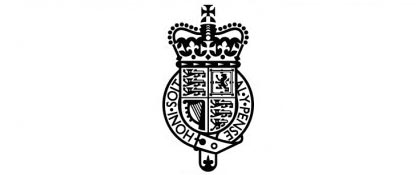

6 Comments
Recommended Comments